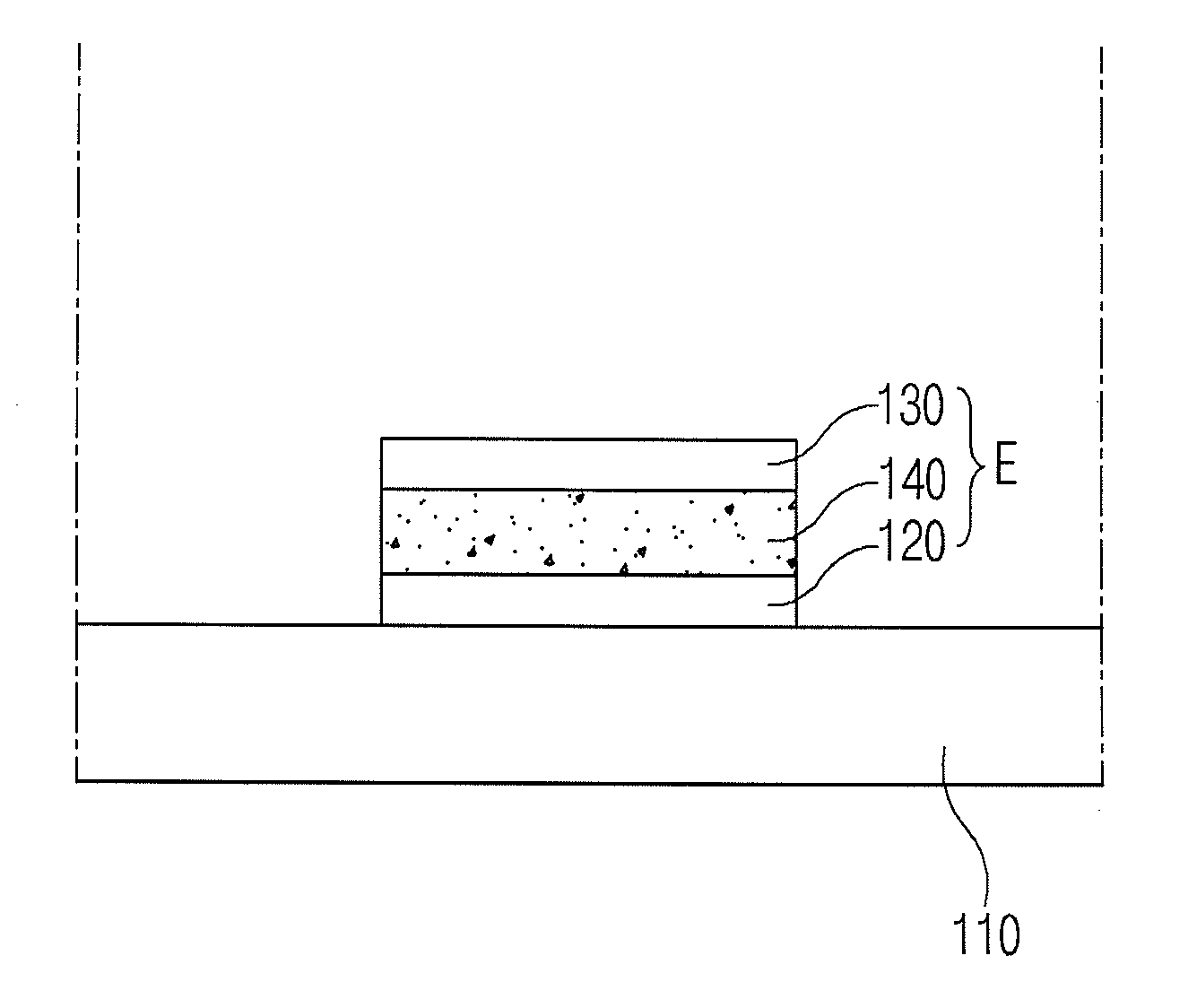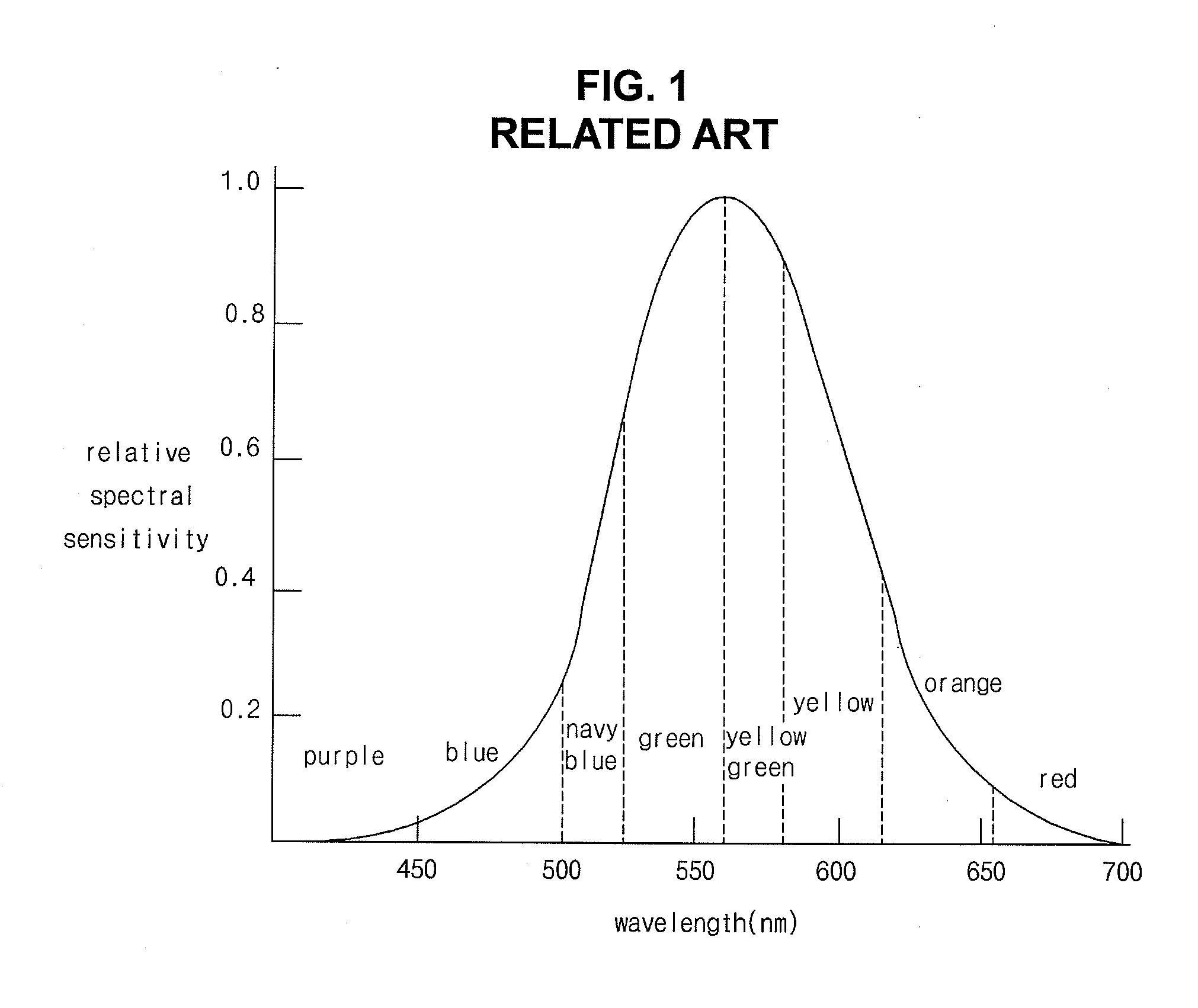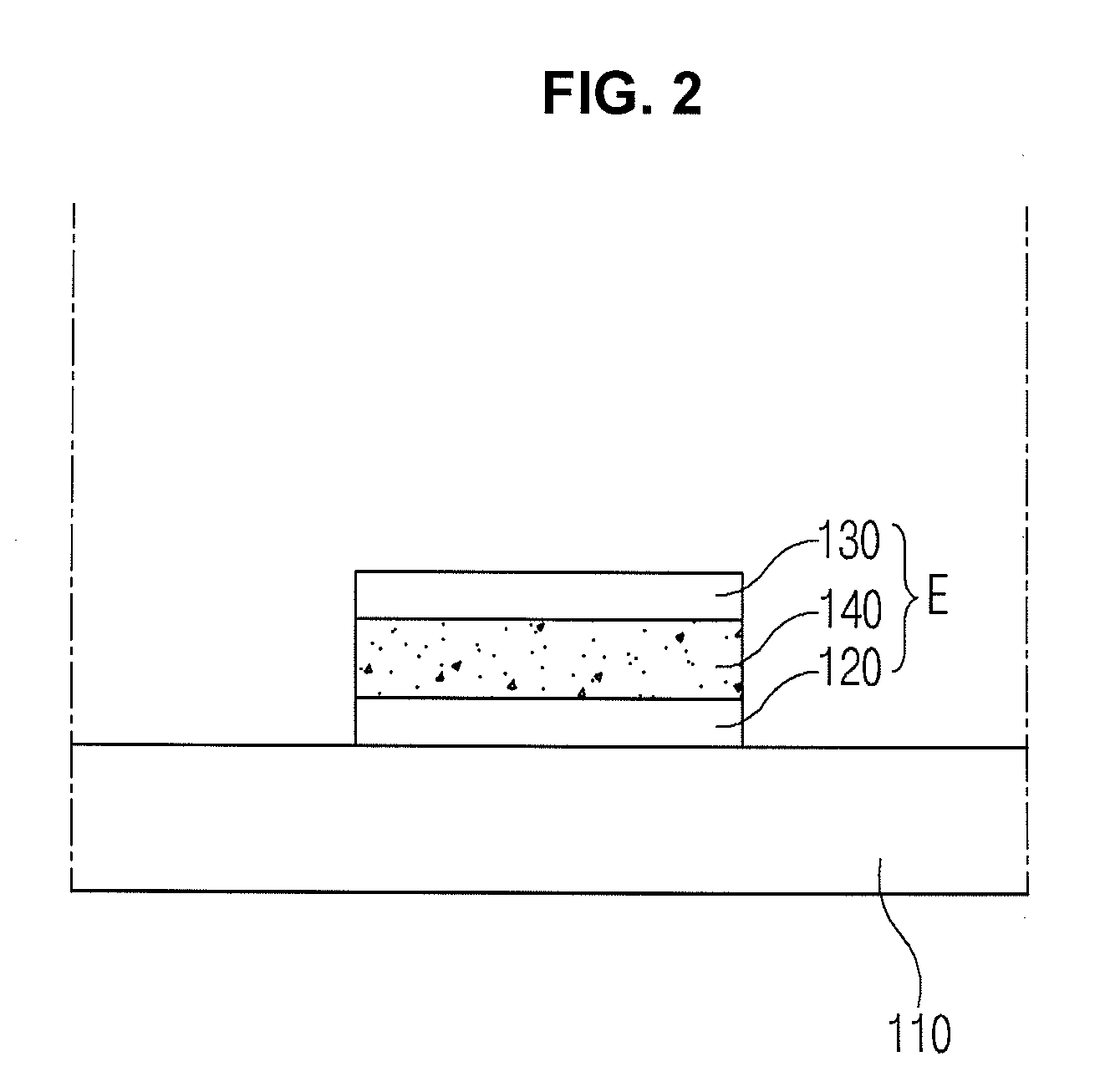Red phoshorescent compound and organic electroluminescent device using the same
a technology of organic electroluminescent devices and phosphorescent compounds, which is applied in the direction of thermoelectric devices, platinum group organic compounds, other domestic articles, etc., can solve the problem of difficulty in achieving high luminance efficiency of oeld
- Summary
- Abstract
- Description
- Claims
- Application Information
AI Technical Summary
Benefits of technology
Problems solved by technology
Method used
Image
Examples
first embodiment
[0021]A red phosphorescent compound according to the first embodiment of the present invention includes a methyl group. Namely, in the red phosphorescent compound of the first embodiment of the present invention, a fourth position of a phenylquinoline ligand of an iridium (Ir) complex is substituted by the methyl group to improve a steric hindrance effect of the ligand. A quench effect by a molecules interaction is prevented due to improved steric hindrance effect such that the red phosphorescent compound has high luminescent efficiency and high color purity. The red phosphorescent compound is represented by following Formula 2.
[0022]In the above Formula 2,
and each of R1 to R4 is selected from the group consisting of hydrogen atom (H), C1 to C6 substituted or non-substituted alkyl group, C1 to C6 substituted or non-substituted alkoxy group, and halogen atom. For example, the halogen atom includes fluorine (F), chlorine (Cl) and bromine (Br). The C1 to C6 alkyl group includes methyl,...
example 1
[0036]An indium-tin-oxide (ITO) layer is patterned on a substrate and washed such that an emission area of the ITO layer is 3 mm*3 mm. The substrate is loaded in a vacuum chamber, and the process pressure is adjusted to 1*10−6 ton. CuPC (about 200 angstroms), 4,4′-bis[N-(1-naphtyl)-N-phenylamino]-biphenyl (NPD) (about 400 angstroms), an emitting layer (about 200 angstroms) including aluminum(III) bis(2-methyl-8-quinolinato)-4-phenylphenolate (BAlq) and
in the above Formular 4 as a dopant (about 5 weight %), Alq3 (about 300 angstroms), fluorolithium (LiF) (about 5 angstroms) and aluminum (Al) (about 1000 angstroms) are sequentially formed on the ITO layer such that an OELD is fabricated.
[0037]The OELD produces a brightness of 1682 cd / m2 at an electric current of 0.9 mA and a voltage of 6.2 V. At this time, the X index and Y index of CIE color coordinates are 0.641 and 0.357, respectively.
example 2
[0038]An ITO layer is patterned on a substrate and washed such that an emission area of the ITO layer is 3 mm*3 mm. The substrate is loaded in a vacuum chamber, and the process pressure is adjusted to 1*10−6 ton. CuPC (about 200 angstroms), NPD (about 400 angstroms), an emitting layer (about 200 angstroms) including BAlq and
in the above Formula 4 as a dopant (about 5 weight %), Alq3 (about 300 angstroms), LiF (about 5 angstroms) and Al (about 1000 angstroms) are sequentially formed on the ITO layer such that an OELD is fabricated.
[0039]The OELD produces a brightness of 1850 cd / m2 at an electric current of 0.9 mA and a voltage of 6.0 V. At this time, the X index and Y index of CIE color coordinates are 0.642 and 0.357, respectively.
PUM
| Property | Measurement | Unit |
|---|---|---|
| voltage | aaaaa | aaaaa |
| thickness | aaaaa | aaaaa |
| thickness | aaaaa | aaaaa |
Abstract
Description
Claims
Application Information
 Login to View More
Login to View More - R&D
- Intellectual Property
- Life Sciences
- Materials
- Tech Scout
- Unparalleled Data Quality
- Higher Quality Content
- 60% Fewer Hallucinations
Browse by: Latest US Patents, China's latest patents, Technical Efficacy Thesaurus, Application Domain, Technology Topic, Popular Technical Reports.
© 2025 PatSnap. All rights reserved.Legal|Privacy policy|Modern Slavery Act Transparency Statement|Sitemap|About US| Contact US: help@patsnap.com



